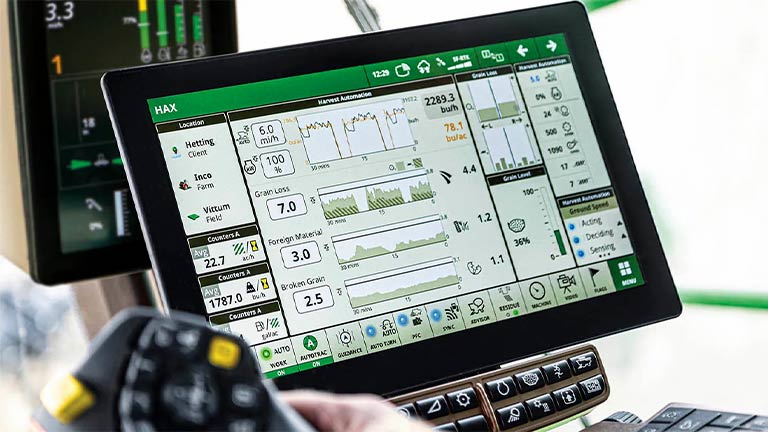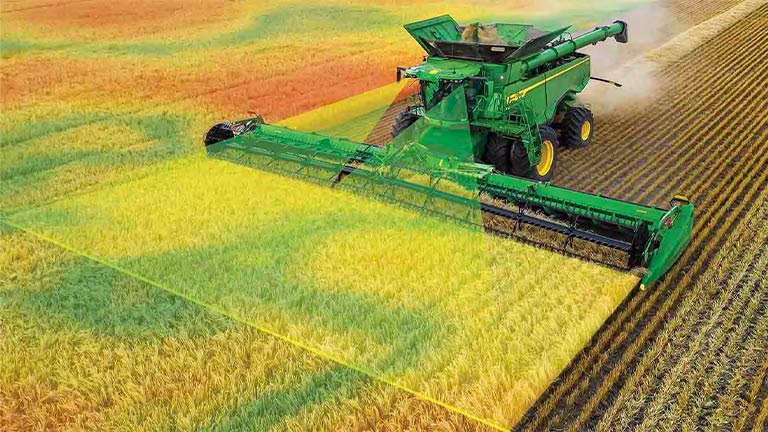ECUs in off-highway vehicles

Electronic control units (ECUs) are ubiquitous in today's passenger vehicles. Responsible for controlling everything from the door mirrors to advanced driver assistance systems (ADAS), an ECU is a hotbed of compute, peripheral interfacing, and networking.
Cars of yesteryear didn't require such complexity. However, as power train designs change, comprehensive infotainment and navigation systems evolve, and safety features become differentiators, the number of electronic systems continues to increase.
Estimates vary, but a modern passenger vehicle may have anything from 30 to 150 ECUs depending on the vehicle's model and fitted options. Luxury high-end vehicles, with lots of motors controlling body and comfort functions, for example, may have considerably more than standard base platforms.
ECU examples include:
- Brake control modules and emergency braking control modules (BCM/EBCM)
- Transmission control module (TCM)
- Body control module (BCM)
Some ECUs manage a single function, for example, an automatic transmission. Others may manage multiple functions, such as all doors, windows and door mirrors.
ECU consolidation and zonal architectures
Vehicle systems are becoming tightly interdependent. Adaptive cruise control (ACC) accesses multiple systems, including brake and transmission ECUs. Compute requirements are rising significantly, and the automotive industry is moving toward zonal architectures in response.
This approach is consolidating multiple discrete ECU functions into a zone-based, compute-capable ECU, connected to other vehicle ECUs through a gigabit Ethernet backbone. This architectural approach sees Tier 1 suppliers optimizing the number of ECUs required, which helps in reducing the physical space and the amount of cabling required. The weight of cable harnesses has grown significantly as more technology finds its way into vehicles. The opportunity to save weight and cost represents a major advantage for automobile makers.
Another significant factor driving the adoption of zonal electrical and electronic (E/E) architectures is the rise of the software-defined vehicle (SDV). ADAS functions, for example, rely on receiving, analyzing and interpreting data from one or more sensors for driver alerts and safety control.
Off-highway vehicles follow passenger vehicle ECU trends
Passenger vehicles are not the only vehicle class experiencing significant changes in their design. Off-highway vehicles, encompassing everything from farm machinery to bulldozers used in agriculture, mining and construction, are also undergoing major transformations.
The operating environment for these vehicles is often challenging, ranging from muddy ground and rocky tracks to sandy trails and snow-covered fields. Sold in much lower quantities than passenger road vehicles, off-highway vehicle design reflects the tasks and conditions they undertake, making them expensive investments. Also, off-highway vehicle owners and operators favor equipment that can perform multiple tasks, often requiring sophisticated electronics and software algorithms.
Unlike passenger road vehicles, which are designed to perform a single function, machinery such as harvesters, backhoe loaders and telescopic handlers have multiple operating modes. Functionality introduces considerably more motors, hydraulic pumps, sensors and actuators, adding complexity and more dependence on operator configuration.
Most passenger vehicle ECUs are designed for a straightforward set of operating conditions, whereas off-highway vehicles often offer multiple operating modes, utilizing more complex software. In line with ECU and architecture developments employed by passenger vehicles, off-highway vehicles are increasingly sophisticated, with some, such as a combine harvester, capable of autonomous operation.
Functions supported by off-highway vehicle ECUs
The operation of an agricultural seed planter illustrates the increasing use of ECUs in off-highway vehicles. Planters need to accommodate myriad seed types, soil conditions and sowing patterns. All these factors impact the operation of the planter, requiring different sowing speeds, hydraulic pressures, engine torque and precise positioning.
Typically, a planter moves relatively slowly. Developing sufficient torque at low engine RPM and vectoring it to the appropriate axles requires full interaction with the transmission control. Also, most of the sowing process is autonomous, with the planter following a pre-defined route, using Global Navigation Satellite System (GNSS) to steer and maintain planting equidistant rows of seeds at a carefully controlled speed. As such, the ECUs require high-performance microprocessors qualified for use in environmentally demanding conditions. Resilient networking between all the ECUs is also a prerequisite.
System reliability is paramount for such applications. Downtime during adverse planting weather conditions can significantly impact crop yields. Key parameters, such as sowing speed, engine torque, seed drill profile, hydraulic pressures and planting track, differ from one crop to another. The planters' software will implement these operational changes when switching crops. Sowing data is typically uploaded to a farm management system, allowing the harvester operator to retrieve it and automatically follow it at any time.

Typical combine harvesters now have between five and 10 ECUs with separate units for engine control, hydraulic control, transmission system, harvesting and threshing, remote diagnostic and monitoring, and yield sensors and path planning. These are networked to optimize harvesting operations. This contrasts with the one or two ECUs found in harvesters in the 2010s.
John Deere, Claas Lexion and New Holland harvesters are some of the most innovative. John Deere claims that its S7 and X9 models boost performance by up to 20% over earlier harvesters thanks to precise settings delivering more consistent grain quality, predictive ground-speed automation optimizing loading and unloading, and faster headland turns where saving a few seconds at every turn adds hours of productivity over the season.

Not all off-highway vehicles are as complex as planters or harvesters. However, with AI algorithms increasingly used in many off-road vehicles for object detection, powertrain optimization, and terrain monitoring, the use of high-performance ECUs is growing.
The interaction between safety, functional and operational ECUs benefits from the zonal architectures employed in modern passenger vehicles. Even the latest top-end models of the humble side-by-side quad bike now feature terrain tracking and anti-rollover, requiring rapid interaction between the vehicle's suspension, traction control and stability ECUs. Adaptive suspension systems use sensor inputs to an ECU to soften or stiffen the suspension in milliseconds, improving the vehicle's handling, reducing body roll and improving passenger comfort.
Hill start and hill descent controls are other examples of popular off-highway vehicle features that benefit from ECUs running software-defined functions. Other important safety features include 360-degree object detection, which protects pedestrians or workers from injury.
From road to farm and beyond
ECUs play an increasingly important role in advancing the development of off-highway vehicles, not least in boosting agricultural productivity while simultaneously enhancing operator safety. Introducing many of the ADAS and safety features found in passenger vehicles adds significant value for manufacturers and the adoption of software-defined architectures enables the mass configuration and customization of off-highway vehicles, adding new functionality and delivering increased customer value.



